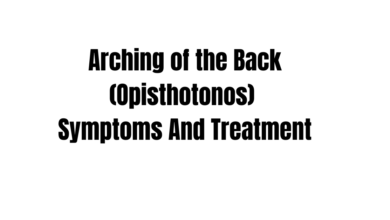Tetanus vs. Other Infectious Diseases: Understanding the Differences

Introduction
In the realm of infectious diseases, it is crucial to understand the nuances and distinctions between various conditions to ensure accurate diagnosis, effective treatment, and successful prevention strategies. One such comparison worth exploring is the contrast between tetanus and other infectious diseases. By examining their disparities, we can shed light on the unique aspects of tetanus and provide valuable insights that set it apart from its counterparts.
Tetanus: An In-Depth Overview
Tetanus, commonly known as lockjaw, is a bacterial infection caused by Clostridium tetani. This bacterium releases potent toxins that affect the nervous system, leading to muscle stiffness and spasms. The initial symptoms often manifest in the jaw and neck, hence the colloquial term “lockjaw.” Unlike many other infectious diseases, tetanus is not transmitted from person to person. Instead, it typically enters the body through deep wounds or cuts, where the bacterium thrives in anaerobic conditions.
Unique Mode of Transmission
One key distinguishing factor between tetanus and other infectious diseases lies in their modes of transmission. Tetanus is primarily acquired through the introduction of Clostridium tetani bacteria into the body via puncture wounds, burns, or any open wound that offers a suitable environment for bacterial growth. These bacteria can be found in soil, dust, and even animal feces. In contrast, many other infectious diseases rely on direct person-to-person contact, contaminated surfaces, respiratory droplets, or vectors such as mosquitoes or ticks for transmission.
Identifying Symptoms and Clinical Presentation
Recognizing the symptoms and clinical presentation of tetanus is essential in differentiating it from other infectious diseases. Tetanus is characterized by muscle stiffness and spasms that typically begin with the jaw muscles. As the infection progresses, these spasms spread throughout the body, leading to painful muscle contractions. In severe cases, the respiratory muscles may be affected, resulting in breathing difficulties. On the other hand, other infectious diseases may present with symptoms such as fever, cough, rash, fatigue, or gastrointestinal disturbances, depending on the specific pathogen involved.
Treatment Challenges and Strategies
Treating tetanus poses unique challenges when compared to other infectious diseases. While antibiotics can effectively eliminate the Clostridium tetani bacteria, addressing the symptoms and managing complications require a multidisciplinary approach. Patients with tetanus often require specialized care, including wound management, muscle relaxants, sedation, and respiratory support. The severity of tetanus cases may necessitate access to specialized facilities and intensive care resources, making it a complex and resource-intensive process.
Prevention: A Vital Approach
Prevention strategies for tetanus differ from those employed for many other infectious diseases. The primary preventive measure for tetanus is vaccination. Administered as the tetanus toxoid vaccine, it is a routine part of childhood immunization and necessitates periodic booster doses throughout life to maintain long-term protection. Additionally, tetanus prevention emphasizes the importance of proper wound care and hygiene practices, particularly in environments where exposure to the bacterium is more likely, such as construction sites or agricultural settings. In contrast, other infectious diseases may require different vaccination schedules, vector control measures, or targeted treatment interventions.
Conclusion
In conclusion, understanding the distinctions between tetanus and other infectious diseases is vital for accurate diagnosis, effective treatment, and successful prevention. The unique mode of transmission, specific symptoms, treatment challenges, and prevention strategies associated with tetanus set it apart from its counterparts. By recognizing these differences, healthcare professionals and individuals can implement tailored approaches to combat tetanus effectively and protect themselves against this potentially life-threatening infection.





